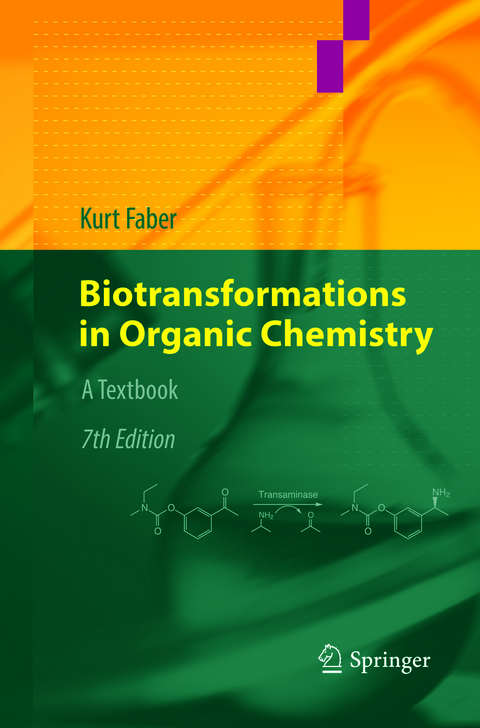
Biotransformations in Organic Chemistry
Springer International Publishing (Verlag)
978-3-319-87116-5 (ISBN)
This well-established textbook on biocatalysis provides a basis for undergraduate and graduate courses in modern organic chemistry, as well as a condensed introduction into this field. After a basic introduction into the use of biocatalysts-principles of stereoselective transformations, enzyme properties and kinetics-the different types of reactions are explained according to the 'reaction principle', such as hydrolysis, reduction, oxidation, C-C bond formation, etc. Special techniques, such as the use of enzymes in organic solvents, immobilization techniques, artificial enzymes and the design of cascade-reactions are treated in a separate section. A final chapter deals with the basic rules for the safe and practical handling of biocatalysts.
The use of biocatalysts, employed either as isolated enzymes or whole microbial cells, offers a remarkable arsenal of highly selective transformations for state-of-the-art synthetic organic chemistry. Over the last two decades, this methodology has become an indispensable tool for asymmetric synthesis, not only at the academic level, but also on an industrial scale.
In this 7th edition new topics have been introduced which include alcohol and amine oxidases, amine dehydrogenases, imine reductases, haloalkane dehalogenases, ATP-independent phosphorylation, Michael-additions and cascade reactions. This new edition also emphasizes the use of enzymes in industrial biotransformations with practical examples.
Kurt Faber obtained his PhD in synthetic organic chemistry at the University of Graz in 1982. He then became a postdoctoral fellow at the Memorial University of Newfoundland. After moving to TU Graz as an University assistant, Faber was a visiting senior scientist at the University of Tokyo and at Exeter University. In 1990 he received his habilitation in Organic Chemistry at the Institute of Organic Chemistry, University of Technology Graz where he was appointed to Associate Professor in 1997, in the following year he moved to the Institute of Organic Chemistry at the University of Graz where he holds a full professorship. Faber's career was supplemented by becoming a visiting senior scientist at the University of Trondheim, Stockholm University, the University of Minnesota and the ESPCI in Paris.
Introduction.- Common Prejudices Against Enzymes.- Advantages and Disadvantages of Biocatalysts. Enzyme Properties and Nomenclature.- Biocatalytic Applications: Hydrolytic Reactions.- Reduction Reactions.- Oxidation Reactions.- Formation of Carbon-Carbon Bonds.- Addition and Elimination Reactions.- Transfer Reactions.- Halogenation and Dehalogenation Reactions.- Special Techniques: Enzymes in Organic Solvents.- Cascade Reactions.- Immobilization.- Artificial and Modified Enzymes.- State of the Art and Outlook.- Appendix: Basic Rules for Handling Biocatalysts.- Abbreviations.- Suppliers of Enzymes.- Commonly Used Enzyme Preparations.- Major Culture Collections.- Pathogenic Bacteria and Fungi.- Index.
| Erscheinungsdatum | 25.01.2019 |
|---|---|
| Zusatzinfo | XI, 434 p. 327 illus., 314 illus. in color. |
| Verlagsort | Cham |
| Sprache | englisch |
| Maße | 155 x 235 mm |
| Gewicht | 682 g |
| Themenwelt | Naturwissenschaften ► Chemie ► Organische Chemie |
| Schlagworte | Biocatalysis • Biotechnology • Biotransformation textbook • enzymes • organic chemistry textbook • Whole Cells |
| ISBN-10 | 3-319-87116-1 / 3319871161 |
| ISBN-13 | 978-3-319-87116-5 / 9783319871165 |
| Zustand | Neuware |
| Informationen gemäß Produktsicherheitsverordnung (GPSR) | |
| Haben Sie eine Frage zum Produkt? |
aus dem Bereich


